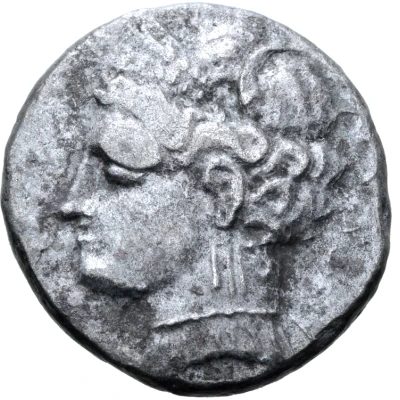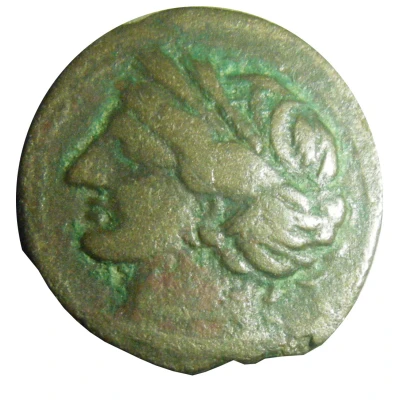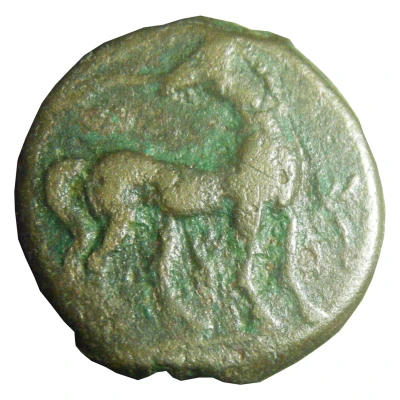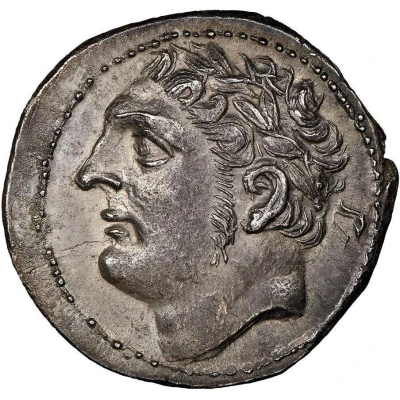
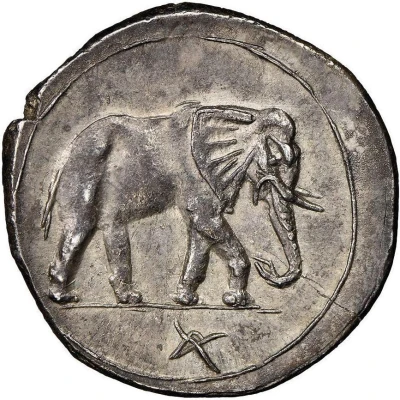

© Éditions V. Gadoury
1 Shekel - Hannibal 221 BC - 201 BC
| Silver | 6.08 g | - |
| Issuer | Carthage (Zeugitana) |
|---|---|
| Period | Second Punic War (218 BC - 203 BC) |
| Type | Standard circulation coin |
| Years | 221 BC - 201 BC |
| Value | 1 Shekel |
| Currency | Shekel |
| Composition | Silver |
| Weight | 6.08 g |
| Shape | Round (irregular) |
| Technique | Hammered |
| Demonetized | Yes |
| Updated | 2024-10-09 |
| Numista | N#308711 |
|---|---|
| Rarity index | 100% |
Reverse
Elephant walking right.
Comment
The Second Punic War was a period of high production and great experimentation for coinage. A great many new types were introduced, and Rome, for the first time, began to strike coins consistently and on a large scale.Coins of this type were long thought to have been minted by King Jugurtha of Numidia (118-106 BC), as HN, p. 884, but their appearance in hoards that clearly dated to the Second Punic War made that attribution impossible. They were then ascribed to Punic forces in Spain, but since most existing specimens have turned up in Sicily it has been suggested that they were minted in Carthage for use by Punic troops on the island. However, it has now been established through hoard evidence – especially from the Enna Hoard of 1966 (IGCH 2232) – that these coins were struck in Sicily or Carthage, rather than in Spain. At least one of the half-shekels is known overstruck on a denarius it seems much more likely that they were struck in a mint controlled by the Carthaginians in Sicily, which was able to use contemporary early denarii as flans.
Robinson speculated that they were struck at Gades since the Punic letter aleph beneath the elephant perhaps was the initial of Agadir, the Punic form of Gades. He recognized that the style and fabric of the coin favoured a later date than other silver coins in the Punic series. He thus assigned it to a few years either side of 209 B.C., when Scipio besieged and won Carthago Nova from the Barcids, who thereafter directed affairs from Gades.
The date, though not known exactly, falls within a broad period of c. 220-205. Many authorities suggest the issue can be even more precisely dated to the Sicilian campaign of 213-210.
The head on the obverse is probably a young Melqart, a deity always popular with soldiers – though he has also been identified as Hannibal himself or his brother Mago, while the elephant was one of Carthage's most potent weapons in the war against Rome.
Interesting fact
The Hannibal coin was minted during a time of great economic and political significance for Carthage. The city was at the height of its power and wealth, and the coinage during this period reflected the advanced engineering and artistic skills of the Carthaginians. The Hannibal coin, in particular, features a detailed portrait of the famous general and statesman, Hannibal, who was known for leading the Carthaginian army against Rome during the Second Punic War. The coin's design and craftsmanship demonstrate the sophistication and cultural achievements of Carthage during this time.
